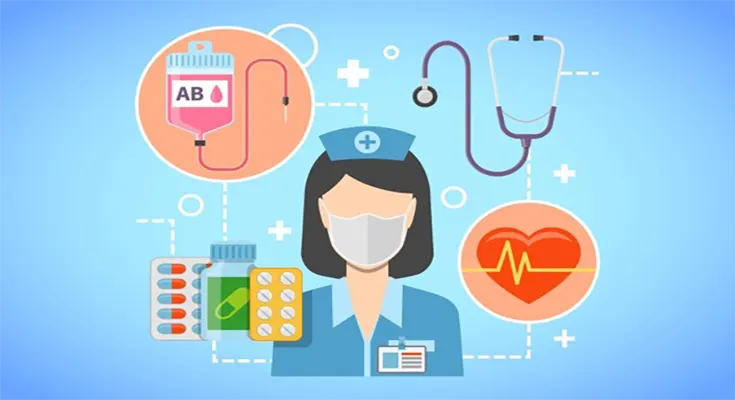Ensuring continuous drug safety is a cornerstone of public health and pharmacovigilance. In Indonesia, the Indonesian Food and Drug Authority (Badan Pengawas Obat dan Makanan, BPOM) plays a pivotal role in monitoring and safeguarding the safety and efficacy of pharmaceuticals throughout their lifecycle. This article explores the mechanisms and strategies employed by BPOM to ensure ongoing drug safety, highlighting key processes, challenges, advancements, and future directions. Visit pafikotaaekkanopan.org
The Role of BPOM in Drug Safety
Regulatory Oversight
BPOM is responsible for regulating pharmaceuticals, from their development and approval to their post-market surveillance. This involves a comprehensive framework designed to ensure that drugs are safe, effective, and of high quality. BPOM’s regulatory oversight includes:
- Drug Approval: Evaluating clinical trial data and drug formulations to ensure safety and efficacy before a drug is approved for the market.
- Manufacturing Standards: Ensuring that pharmaceutical manufacturing processes adhere to Good Manufacturing Practice (GMP) standards to prevent contamination and ensure product consistency.
- Labeling Requirements: Mandating clear and accurate drug labeling to provide healthcare professionals and patients with essential information about the drug’s usage, benefits, and potential risks.
Post-Market Surveillance
Adverse Drug Reaction (ADR) Monitoring
After a drug is on the market, BPOM continuously monitors its safety through the collection and analysis of Adverse Drug Reactions (ADRs). This process involves:
- Reporting Systems: Healthcare professionals and consumers can report ADRs to BPOM through various channels, including online platforms, mobile apps, and hotlines.
- Data Collection: BPOM collects and consolidates ADR reports to identify patterns and trends in drug safety.
- Risk Assessment: Evaluating ADR data to assess the risk associated with a drug and determine if regulatory actions are needed.
Periodic Safety Update Reports (PSURs)
Pharmaceutical companies are required to submit Periodic Safety Update Reports (PSURs) to BPOM at specified intervals. PSURs provide a comprehensive overview of a drug’s safety profile based on real-world use and include:
- Safety Data Analysis: Analyzing new safety data, including ADRs, drug interactions, and any other relevant information.
- Benefit-Risk Evaluation: Assessing whether the benefits of the drug continue to outweigh its risks based on the updated safety information.
- Regulatory Actions: Recommending actions such as updating labeling, issuing safety alerts, or, if necessary, withdrawing the drug from the market.
Risk Management Strategies
Risk Communication
Effective risk communication is essential for ensuring that healthcare professionals and the public are aware of potential risks associated with drugs. BPOM employs several strategies:
- Safety Alerts: Issuing safety alerts and advisories to inform stakeholders about new safety concerns or changes in drug use recommendations.
- Educational Campaigns: Conducting educational campaigns to raise awareness about drug safety and the importance of reporting ADRs.
- Guidelines and Recommendations: Providing updated guidelines and recommendations for drug use based on the latest safety information.
Risk Minimization Measures
BPOM implements various risk minimization measures to mitigate the risks associated with drugs:
- Restricted Use: Imposing restrictions on the use of certain drugs, such as limiting their use to specific patient populations or conditions.
- Risk Evaluation and Mitigation Strategies (REMS): Requiring additional safety monitoring or patient education for drugs with known safety concerns.
- Labeling Changes: Updating drug labels to include new safety information, warnings, or contraindications.
Challenges in Ensuring Drug Safety
Underreporting of ADRs
A significant challenge in pharmacovigilance is the underreporting of ADRs. Many adverse reactions go unreported due to:
- Lack of Awareness: Healthcare professionals and patients may not be fully aware of the importance of ADR reporting or the available reporting channels.
- Perceived Mildness: ADRs that are perceived as mild or not directly related to the drug may not be reported.
Data Integration and Analysis
Integrating and analyzing safety data from various sources can be complex:
- Data Sources: ADRs can come from multiple sources, including spontaneous reports, clinical trials, and post-marketing studies. Ensuring that all relevant data is considered in safety evaluations is crucial.
- Data Quality: The quality of data collected in ADR reports can vary, affecting the reliability of the safety analysis.
Resource Constraints
BPOM faces resource constraints that can impact its ability to effectively monitor and manage drug safety:
- Funding and Personnel: Limited funding and personnel may affect the efficiency of safety monitoring and regulatory actions.
- Technological Limitations: Outdated technology and systems can hinder the ability to manage and analyze large volumes of safety data.
Recent Advancements in Drug Safety Monitoring
Digital Transformation
BPOM has embraced digital transformation to enhance drug safety monitoring:
- Electronic Reporting Systems: The implementation of electronic ADR reporting systems streamlines the reporting process and improves data management.
- Mobile Applications: Mobile apps for ADR reporting increase accessibility and encourage more users to report adverse reactions.
Advanced Data Analytics
Advanced data analytics tools are being used to improve the analysis of safety data:
- Big Data Analytics: Leveraging big data analytics helps identify trends and patterns in ADR data more effectively.
- Artificial Intelligence (AI): AI technologies assist in detecting potential safety issues and predicting adverse effects based on historical data.
Public Awareness and Education
Increased efforts to raise public awareness about drug safety have led to:
- Educational Campaigns: Campaigns targeting healthcare professionals and consumers to emphasize the importance of reporting ADRs.
- Training Programs: Training programs for healthcare providers on the latest safety guidelines and reporting procedures.
Future Directions in Drug Safety
Enhancing Reporting Compliance
Efforts to improve ADR reporting compliance include:
- Incentives for Reporting: Providing incentives or recognition for healthcare professionals who actively report ADRs.
- Simplified Reporting Processes: Streamlining reporting procedures to make it easier for healthcare professionals and patients to submit ADR reports.
Expanding Digital Capabilities
Further expansion of digital capabilities can enhance drug safety monitoring:
- Integration of Emerging Technologies: Incorporating technologies such as blockchain and AI for better data management and analysis.
- Upgraded Systems: Investing in modern technology and systems to improve the efficiency of safety monitoring processes.
Strengthening International Collaboration
Collaborating with international regulatory bodies and organizations can improve drug safety:
- Global Data Sharing: Participating in global pharmacovigilance networks to share safety data and best practices.
- Adopting International Standards: Aligning with international safety standards and guidelines to enhance the effectiveness of drug safety monitoring.
Conclusion
Ensuring continuous drug safety is a multifaceted process that involves rigorous monitoring, data analysis, and risk management. BPOM plays a crucial role in overseeing drug safety in Indonesia, employing various strategies and tools to monitor and manage risks associated with pharmaceuticals. Despite challenges such as underreporting and resource constraints, recent advancements in digital technology, data analytics, and public awareness are enhancing the effectiveness of drug safety monitoring. By continuing to improve reporting compliance, expand digital capabilities, and strengthen international collaboration, Indonesia can further safeguard public health and ensure the ongoing safety and efficacy of its pharmaceutical products



